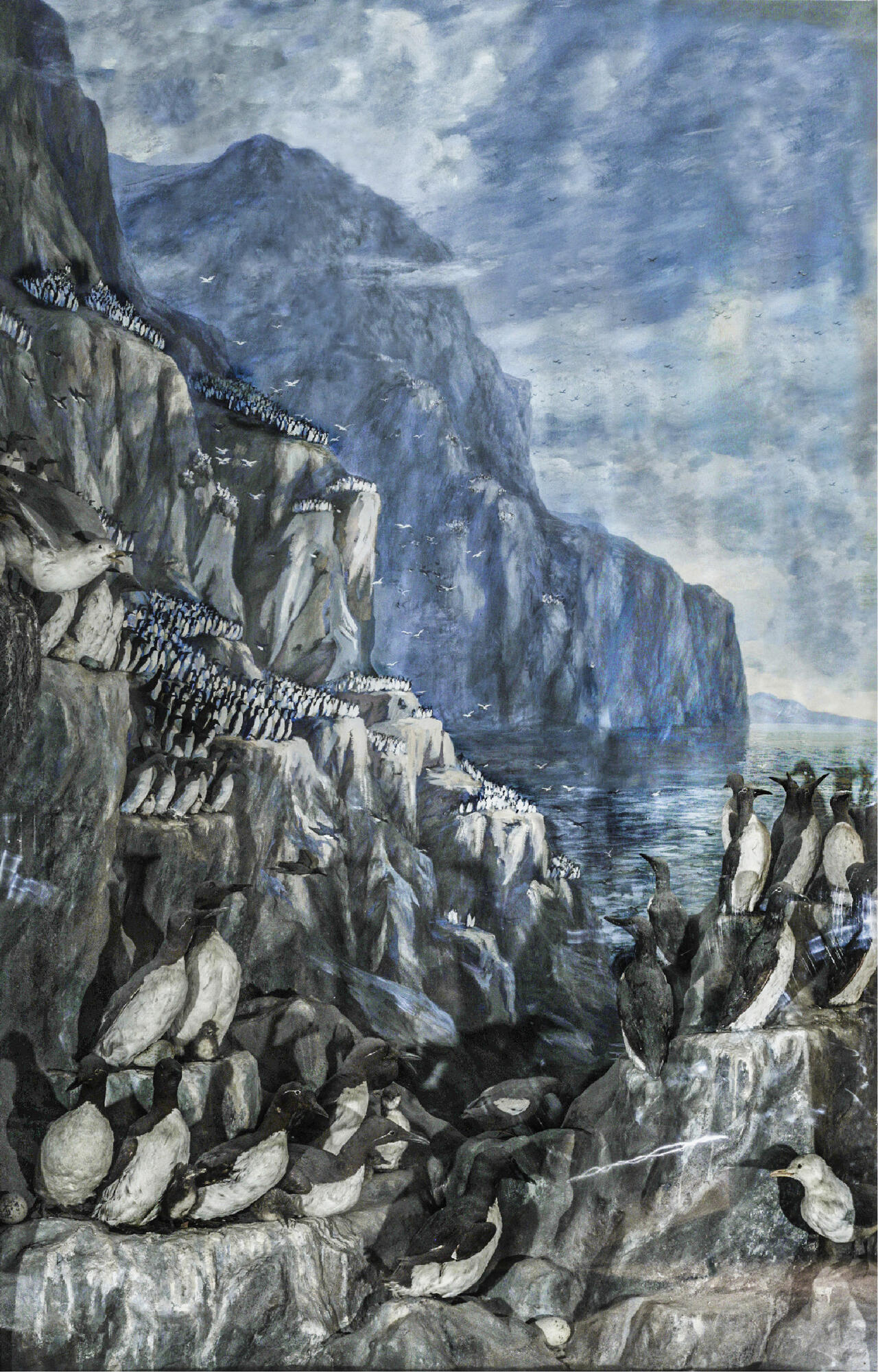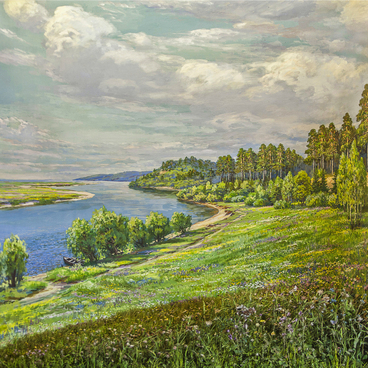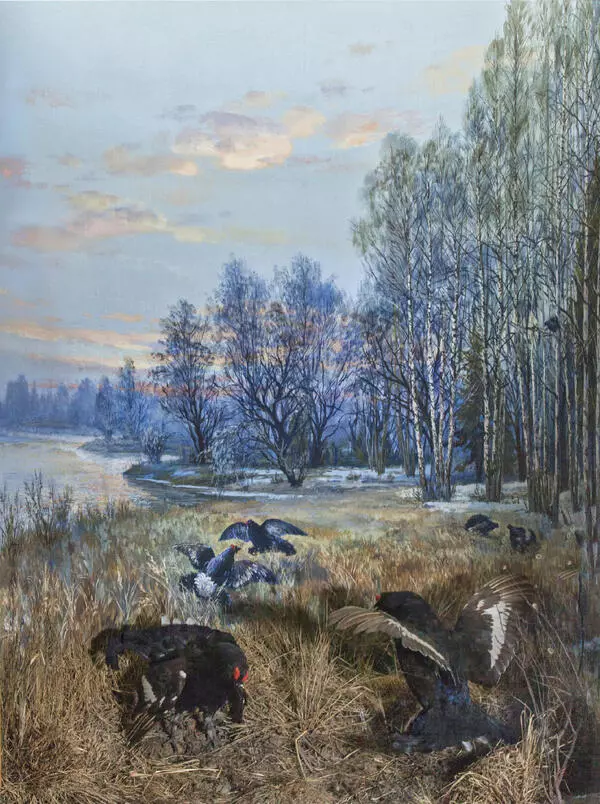Bird colonies are mass numbers of nesting seabirds located on cliffs and bluffs in the Northern Hemisphere. Some colonies extend for dozens of kilometers along the coast and have hundreds of thousands and even millions of birds. The inhabitants of seashore colonies of birds play a huge role in the biological balance of the sea, have a great influence on the vegetation cover of the islands and the mainland.
The largest seashore colonies of birds in the north of Russia are located on Novaya Zemlya, Franz Josef Land, as well as on the northern coast of the Kola Peninsula. On the diorama of such a seashore colony of birds, the artist Efim Deshalyt depicted its typical inhabitants: murres, guillemots, and kittiwakes.
The most numerous inhabitants of most nesting sites are murres. They get food in the sea. Also, they perfectly swim and dive. These birds move like penguins under the water. The external similarity with penguins is also noticeable in the physique and color of the murres. They are even called northern penguins in some European languages.
Each pair of murres has its own nesting territory, small, but well-protected from other individuals. Every year, the birds return to practically the same place. Such phenomenon is called nesting conservatism.
The murres' nests are located openly on the cornices of the rocks. There is one large egg of an elongated elliptical shape in the clutch. Thanks to this pear-shaped shape, the eggs are in closer contact with the surface, have increased strength and do not roll off the cliff, even if someone pushes them.
Unlike the murres, which lay their eggs directly on open rock, the guillemots’ nest in crevices or screes, among stones. Guillemots equip their nest with specific bedding made of tiny stones that protect the clutch from dampness. Guillemots usually lay two eggs, less often one or three.
The kittiwake, a typical oceanic bird, usually stays on the shore only during the nesting period and spends the rest of the time in the sea. Young kittiwakes spend the first 3–5 years of their life entirely in the sea before going ashore and starting breeding. For nests, these seagulls choose the narrowest ledges and cornices that are unfit for other seabirds' clutches.
The largest seashore colonies of birds in the north of Russia are located on Novaya Zemlya, Franz Josef Land, as well as on the northern coast of the Kola Peninsula. On the diorama of such a seashore colony of birds, the artist Efim Deshalyt depicted its typical inhabitants: murres, guillemots, and kittiwakes.
The most numerous inhabitants of most nesting sites are murres. They get food in the sea. Also, they perfectly swim and dive. These birds move like penguins under the water. The external similarity with penguins is also noticeable in the physique and color of the murres. They are even called northern penguins in some European languages.
However, these birds are not relatives, and all their similarities are explained by adaptation to the same conditions of existence. In fact, the family Alcidae, to which the murres belong, is closer to seagulls.
Each pair of murres has its own nesting territory, small, but well-protected from other individuals. Every year, the birds return to practically the same place. Such phenomenon is called nesting conservatism.
The murres' nests are located openly on the cornices of the rocks. There is one large egg of an elongated elliptical shape in the clutch. Thanks to this pear-shaped shape, the eggs are in closer contact with the surface, have increased strength and do not roll off the cliff, even if someone pushes them.
Unlike the murres, which lay their eggs directly on open rock, the guillemots’ nest in crevices or screes, among stones. Guillemots equip their nest with specific bedding made of tiny stones that protect the clutch from dampness. Guillemots usually lay two eggs, less often one or three.
The kittiwake, a typical oceanic bird, usually stays on the shore only during the nesting period and spends the rest of the time in the sea. Young kittiwakes spend the first 3–5 years of their life entirely in the sea before going ashore and starting breeding. For nests, these seagulls choose the narrowest ledges and cornices that are unfit for other seabirds' clutches.





